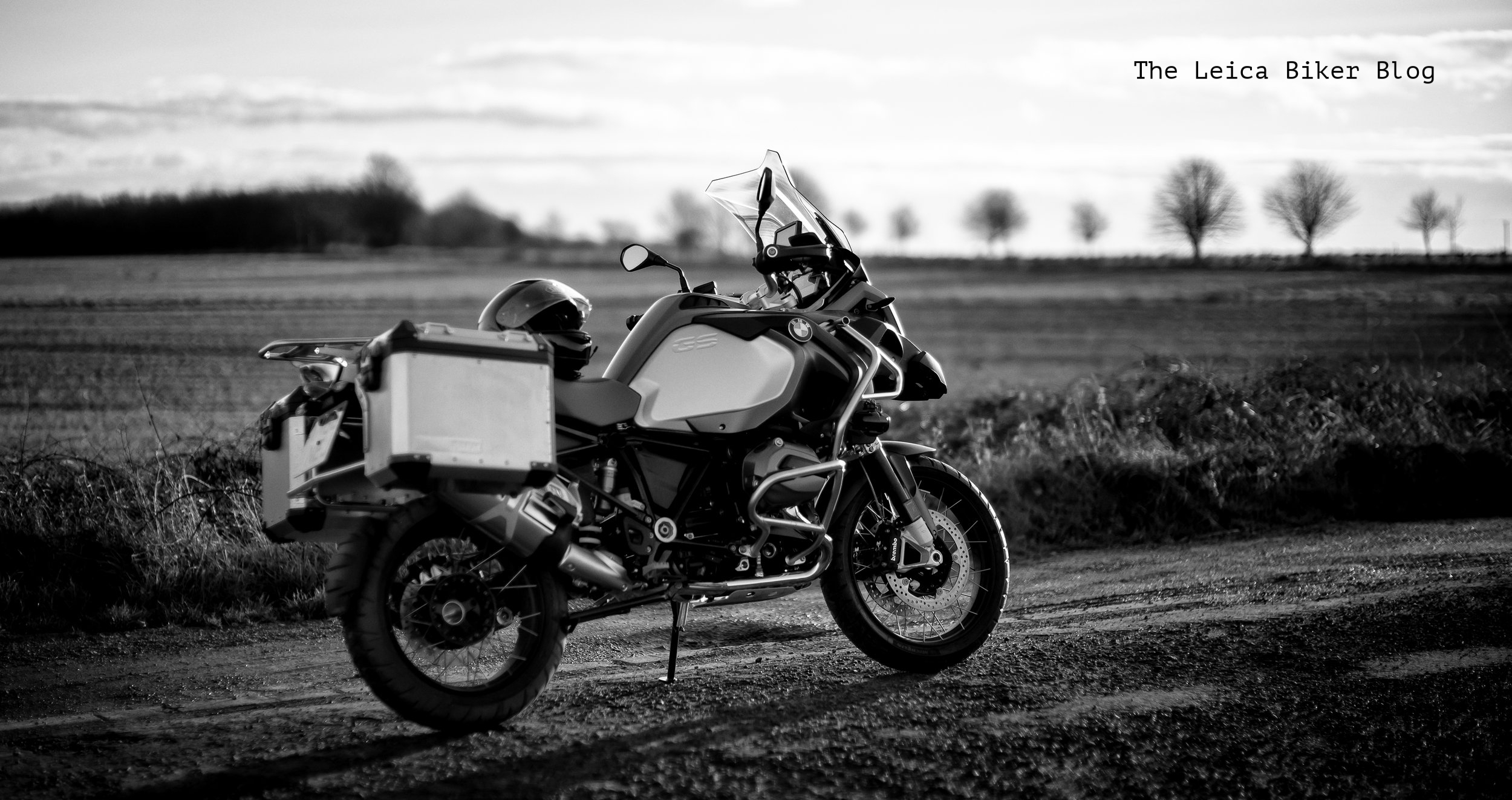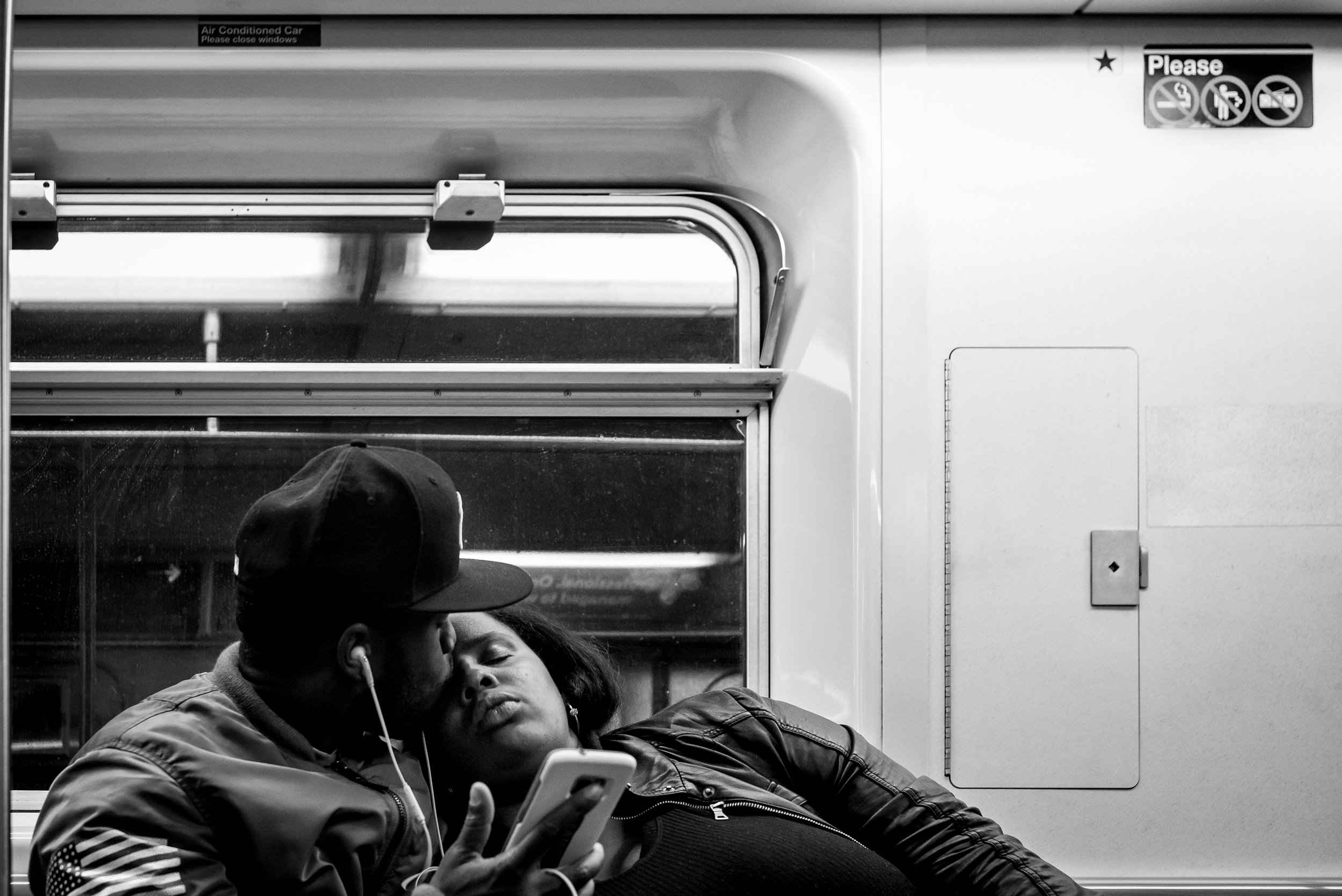‘I hereby certify the photograph above to be real and therefore not created by AI’. Could this be the strap-line necessary to accompany every image we make and share?
I made that opening photo in the New York Subway. A human observing others from the species. I was there, in the moment, experiencing the exact same assault on my senses as everyone in that subway carriage. I watched, waited, felt the mood and released the shutter. Exactly as I did stood in a freezing cold river watching my children play in Lacock, the village heralded as the home of photography because Henry Fox Talbot invented the negative there in 1835. A huge scientific development (no pun intended) and the science continues with AI. To what end for photographers is anyones guess, another tool perhaps. Mostly of concern for me is what it means for Street Photography. Okay, we’ve not quite gone totally Isaac Asimov and ‘I, Robot’ just yet and it has to be said that I’ve seen very few Terminators on the streets.
Necessity is the mother of all invention and that demand is met by human creativity. The camera was invented, it’s a machine that we can use to frame what we wish to create. It was pronounced as being the end of painting and art. It wasn’t and new kind of creativity emerged. Moving from analogue to digital photography wasn’t such a bad thing ether. Adjustments in the Darkroom such as burning and dodging could assist to creativity. When we upload to our computer we might make some minor adjustments using Lightroom, a piece of software invented to assist us in creativity and yes, you’ve guessed it, Lightroom uses AI. The purists amongst us might frown at the Photoshop fans who spend hours manipulating an image, but it’s still just a tool. At least they photographed the original frame. I’m not entirely convinced that AI imagery is a tool to assist photographers though.
I’ve switched my terminology to AI ‘Imagery’ because that’s what we’re really talking about here. Type some text into an AI programme, two seconds later it’s trawled the internet and bingo, there’s “your” image, et voila. To begin with it’s not your image. My understanding is that AI has searched, existing photographs that were made by real committed photographers who have tirelessly searched, suffered, failed, spent years practicing and used that work. Work that incidentally is copyrighted. Here’s an example of some AI Street Photography from Instagram. A couple are pretty good you have to admit. I’m not sure you could tell they were created by AI. Now, to the credit of this particular profile they have declared that the images are generated using AI technology. I mean no disrespect to them and there’s no doubt as to their interest in art, but they also state “created entirely by AI and Me’, that very possibly isn’t true if the dataset includes existing photographs. If you know your Street Photography you will look at some of those images and think; Wow, just type in “Street Photography in the style of Alex Webb”.
Obviously no one in going to type “in the style of John Harper”, that’s clearly ridiculous and besides definitely won’t compute. The style we create has evolved over time, every photographer has one and it takes a huge amount of work, trial and error. We imitate to a certain extent, but eventually develop (no pun once again) one that is unique to us and our resulting photographs. It’s not counterfeit, which I’m afraid to say everything about AI Imagery is.
I’m not sure where it’ll end. Who is? Lately we’ve seen AI Images entered into photography competitions and subsequently pronounced to be the Winner. We had one receive first prize in the Sony Worldwide Photography Awards only for the creator to refuse the prize, he purely wanted to open up a conversation about AI images and their place in photography. It’s not a win for photography, nor ultimately photographers. If you’re one of those who produces work for advertising and corporations, generic or non specific images, you might need to begin preparing your CV and look for another job.
For now Street Photographers will continue to produce fascinating and creative work that will document the 21st century. There’s never has been any financial gain for the vast majority, we do it for love of the genre. I think that those who create AI images are missing a vital component to photography and that’s the process. Often the most enjoyable part, walking the streets, observing, framing and ultimately the frustration when we get nothing or fail. That is what keeps us going back to what in my opinion is the most difficult discipline in photography. The process really is the ultimate in mindfulness. Your mind is in the moment, the benefits of that along with those thousands upon thousands of steps that your body will undoubtedly thank you for. You won’t get that typing some text for a robot to make your shot.
There are three laws in the film I, Robot and Asimov’s book. The laws of robotics and perhaps we should amend those for photography:
A robot may not injure a photographer or, through inaction, allow a photographers copyright come to harm. A robot must obey orders given it by human beings except where such orders would conflict with the First Law. A robot must protect its own existence as long as such protection does not conflict with the First or Second Law.
There we are, my rather simplistic view for now. Unbelievably I sat at my computer to write about AI Imagery and didn’t deviate. Regulars to this blog will know that this has never been achieved before, there was no wandering off on tangents, no disappearing down rabbit holes and I didn’t mention once that I’m like a Greek God! Normal service will be resumed next time. Hasta la vista readers…
All images can be opened by clicking on the thumbnails and are made using a Leica M with Summicron 28mm Lens fitted. Except for the Lacock river shot which I used a Noctilux 50mm.
If you're interested in receiving new Blogposts via email please subscribe using the box below which is titled: ‘The Latest Leica Biker Blogposts Delivered To Your Inbox’.

